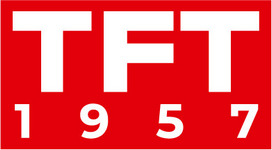
The Apple Vision Pro, with its two 4K displays providing a total of 23 million pixels, sets a new standard for display resolution in virtual reality devices.
Each eye is treated to a 4K display, requiring an immense amount of pixel detail to fully utilize the spatial VR environment capabilities. This demand for high-resolution content has highlighted a significant challenge: current cameras are reportedly unable to meet the required specifications for creating suitable video feeds, as discussed in a recent interview by PetaPixel with Canon executives.
The Complexities of Spatial VR Content
Beyond the impressive display specifications, the Apple Vision Pro’s ability to create a spatial experience—where users can move their heads to see new visual information—adds another layer of complexity. Content must not only be high in resolution but also able to account for depth and movement, making the creation of compatible footage even more challenging. This requires consideration of three-dimensional space and system refresh rates when designing content for such an advanced VR system.
 Available Technological Solutions
Available Technological Solutions
Canon’s AR/VR Offerings
Canon has responded to these challenges with its RF 5.2mm f/2.8 L Dual Fisheye 3D VR Lens and R5 or R5C cameras. This setup uses a unique lens to project dual image circles onto an 8K sensor, addressing synchronization issues found in multi-camera systems. However, this solution still faces limitations in raw resolution compared to the demands of the Apple Vision Pro.
Alternatives on the Market
The market offers a few alternatives capable of nearing the required specifications. The Insta360 TITAN, for instance, nearly meets these demands with its 11K 360 VR footage captured by 8 Micro Four Thirds sensors. However, handling the massive amount of data generated is another hurdle, as the TITAN utilizes 9 memory cards to manage footage and additional information.
 Extreme Solutions and Big Data
Extreme Solutions and Big Data
For those seeking even higher resolutions, the Sphere’s Big Sky Camera offers an 18K resolution, though it comes with its own set of operational challenges and lacks depth perception. Assemblies of multiple cameras present another potential solution but require significant expertise and complex setups.
The Role of AI and Practical Considerations
AI technology is also relevant in this context, particularly for enhancing resolution. While current AI tools are not yet capable of generating content that fully meets these high standards, resolution enhancers show promise in improving existing footage to a professional level.
Reality Check: The Need for Peak Performance
Despite the allure of ultra-high resolutions, most users and content creators do not always require or utilize peak performance for everyday tasks. The Apple Vision Pro’s strength lies in its multitasking capabilities, suggesting that not all content needs to push the boundaries of its display technology to be effective.
Conclusion: The Future of Spatial Content Creation
Creating high-resolution spatial content remains a challenging endeavor, with few practical solutions currently available. The technology and equipment required are both scarce and expensive, posing significant barriers for content creators. However, those who navigate these challenges may find themselves well-positioned in the evolving landscape of AR/VR content.
News source: https://www.usa.canon.com/


 Available Technological Solutions
Available Technological Solutions Extreme Solutions and Big Data
Extreme Solutions and Big Data






